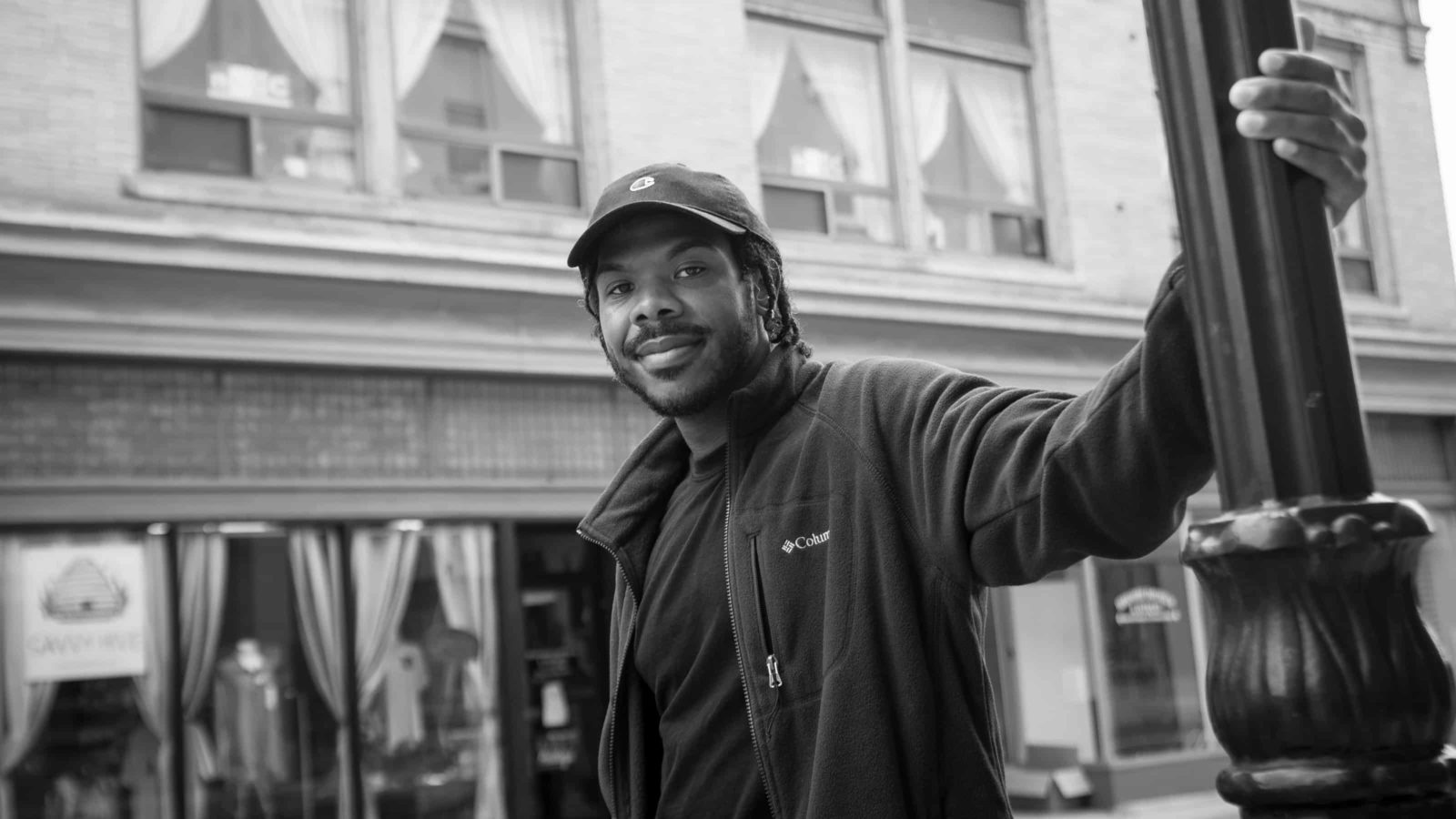In a studio at Massachusetts College of Liberal Arts, bodies are moving in cloth as fluid as water — arms and legs are weaving together, sometimes solid and muscled, sometimes turning into shadow.
College museums are quietly beginning to re-open this fall, after more than a year closed in the pandemic, and at MCLA, photographer, sculptor and installation artist Joshua Ross has come from Los Angeles as an artist in residence. On a quiet fall morning, he is working on a series of drawings in colored pencil in the Art Lab in Gallery 51, the college’s exhibition space in downtown North Adams.
He is creating new work to show in the winter, in the gallery where Hostile Terrain 94 has opened this summer and fall with the work of the Sanctuary City Project and Vietnamese-American artist Trinh Mai, tracing the experiences of immigrants coming to this country and the lives they build here.
Ross focusing on drawings, he said, and developing themes he has brought together in his shows across the years, in exhibits from coast to coast. As he describes his work, he examines Afro-futurism and world building, fluidity in body and in mind, translucent and solid color, a sense of playfulness, and subjective experience — an understanding of consciousness and ways of thinking, and ways of seeing.
He shows two new works in progress, vivid, fluid scenes. Bodies weave vigorous limbs as lithe as a dancing Shiva. They inhabit spaces at once inside and outside. A silhouette ripples on a banner under oak leaves. Figures entwine in a room with a dusky light and a back wall striated grey, like sedimentary rock or agate, or a curtain on a stage.
He is experimenting with hues and strokes, he said, layering in color with his pencils until the pigment takes on a texture and a shine. From his photographic background, he brings a focus on light — he calls one of these new drawings Irises, thinking both of the flower and of the eye.
In his drawings, his figures seem to shift from two to three dimensions, between visible and invisible. But he does not think of invisibility as vanishing, he said — he thinks of it as the point when something exists fully in its environment. These beings are alive and unselfconscious in their worlds. They move freely without feeling the weight of anyone else’s attention. They are absorbed in their actions. And they are not gazing back at the people gazing at them.
“They’re not looking — they’re being,” he said.
They are moving and inviting people into their movement. They ask people nearby not to stand apart and watch, but to feel their own bodies and the world around them.
“In their space, if we’re not confronting ourselves, does that become ourselves,” he asked, “when we’re conscious of our bodies, and when we’re not? There would be no purpose, to me, for them to look. … These aren’t persons — they’re gestures, movements, points of contact.”
They may become people when they are in relationship to people, he said. They may invite people to dissolve boundaries and connect or just to breathe and let each other be.
“… (They explore ) questions about how I understand my identity consciously,” he said, “not through structures pre-existing in this world — feeling as though there are no structures I can inhabit as my own.”

Photographer and sculptor Joshua Ross comes in Fall 2021 as artist in residence with the MCLA Artist Lab.
He feels this residency coming at a good time for him, at a point of clarity. He has come here from Los Angeles, he said, a place where he has found mentorship and space to find his voice, and now he has the chance to take a risk, to have the time to immerse himself in his work, and bring a body of work together, and expand it.
He invokes his drawings from movement, he said, and he draws on an ongoing series of ideas he has explored in photographs and sculptures.
He recalls a recent group show, Loitering is Delightful, at the LA Municipal Art Gallery, inspired by the National Book Awardwinning poet Ross Gay and his essay of the same name, where Gay considers the idea and power of taking your own time.
“Might the gesture of standing or sitting, with no apparent purpose, contain a seed of radical potential?” Gay writes. “… In a world consumed by digital devices and driven by productivity, what possibilities does daydreaming offer? Can fulfillment be found in staring into space? Is there pleasure in simply hanging out?”
Ross created a sculptural installation with music and a series of photographs — he created a garment for someone to wear and activate while he photographed them.
He made the garment so that it could feel awkward or unexpected, he said: “What if it had a pant-leg for an arm? I’d ask people, how would your arm walk.”
He worked with friends, he said — a DJ, a singer, an artist who works with music — and together he and they would choose the places where he photographed them — on a city street at night in the Mission in San Fransisco, inside in New York City, on a hilltop in L.A. surrounded by satellite dishes.
They would wear his cloth sculpture and move in it, he said. They might feel out-of-body, wearing it. It might ask their bodies to behave in ways they usually wouldn’t, and they would have to get comfortable with it. It would influence their movement, and they told him they found something both difficult and relaxing in letting go and their body move, sometimes outside their control.
“I want to propose a path for awe, to wonder and wander for yourself while looking at the work,” he said.
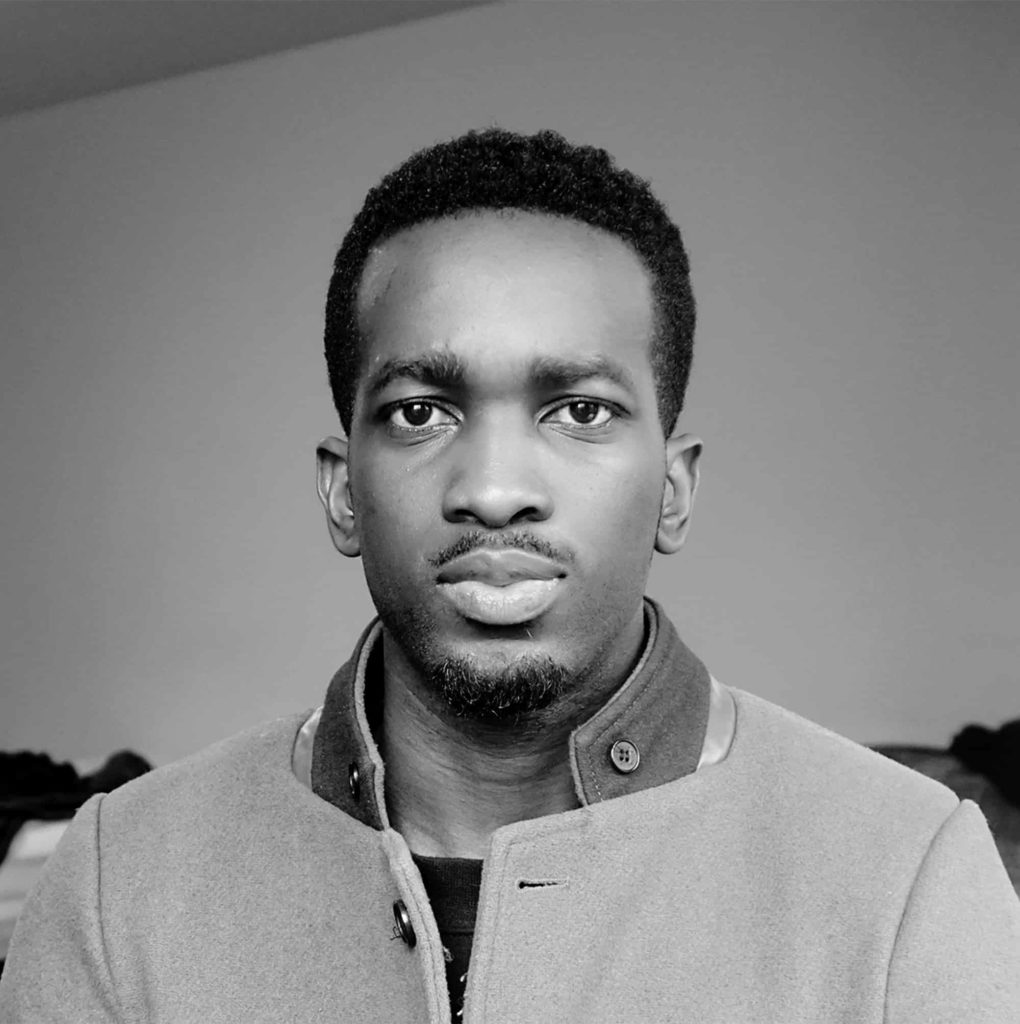

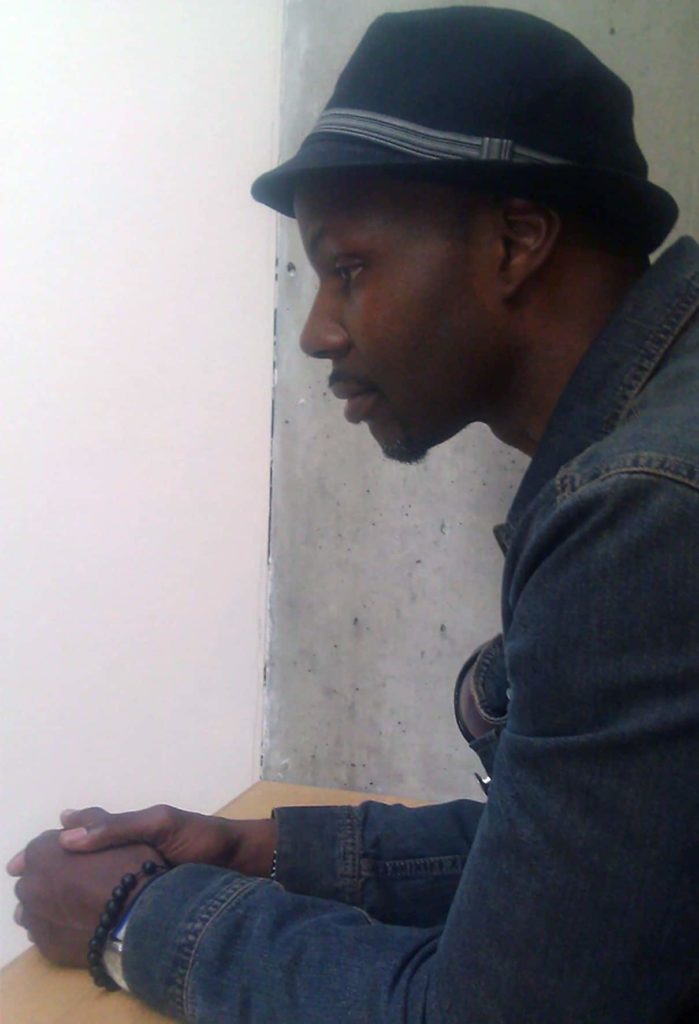
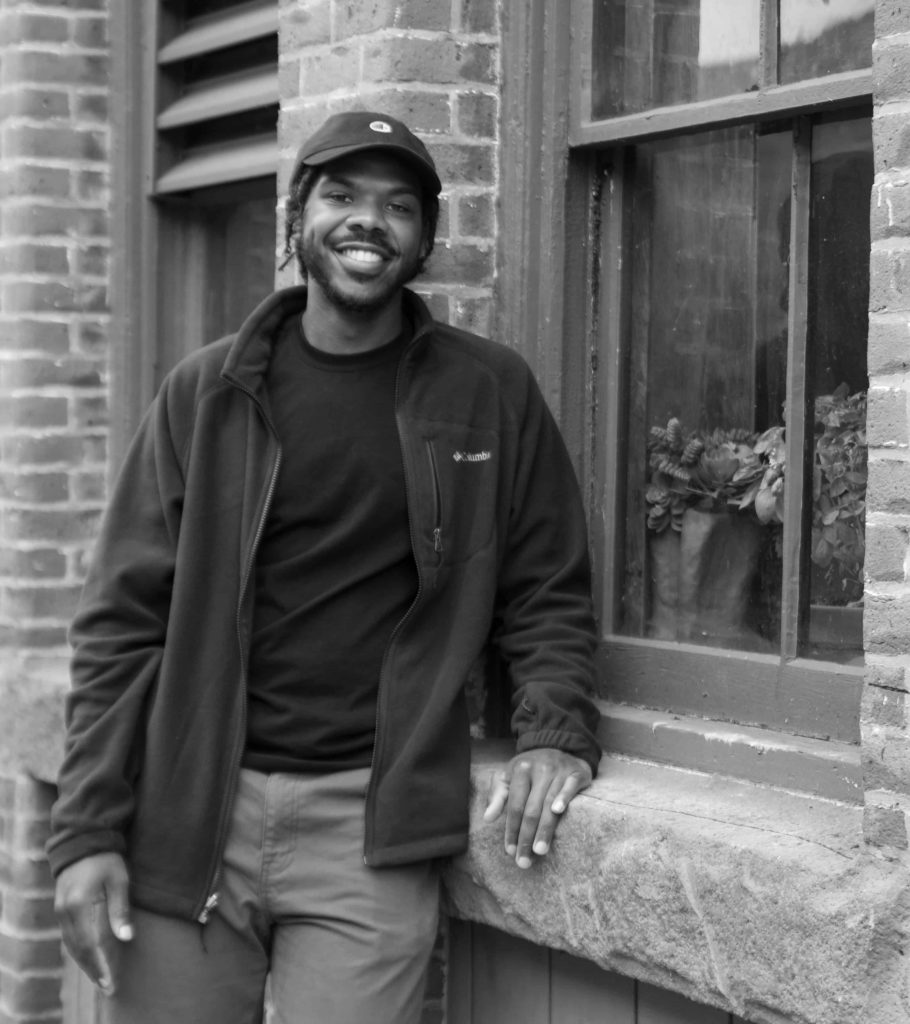
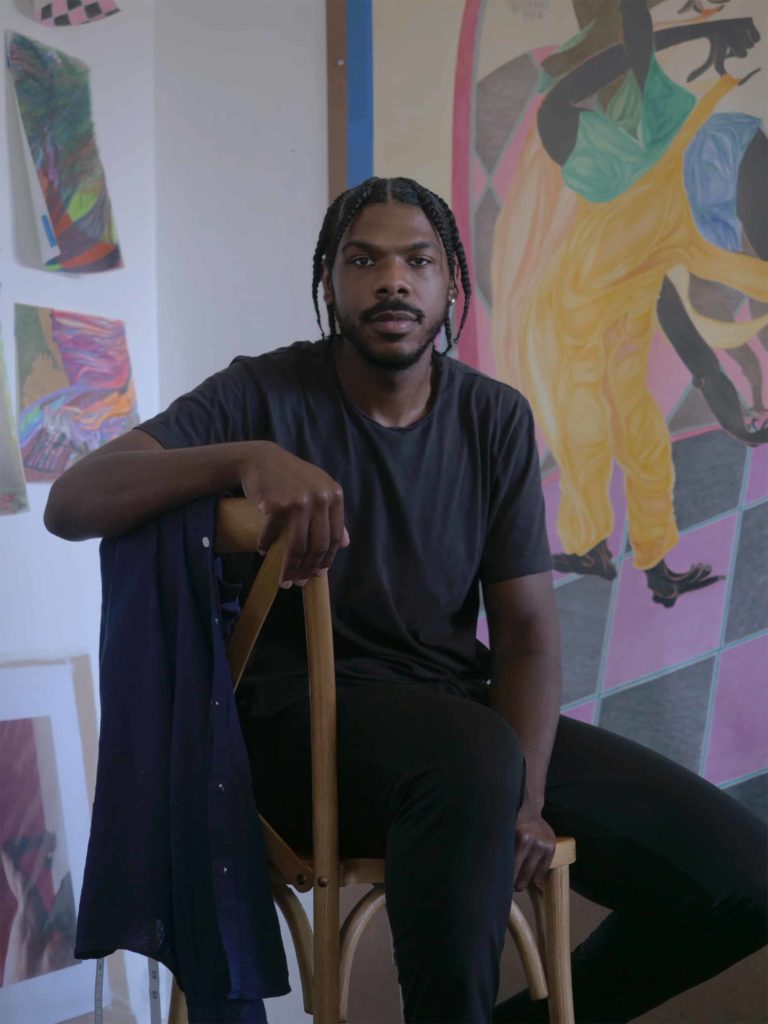
In his drawings, he can build on those movements and experiment with environments and gestures and the shapes of bodies, without the constraints of physical space. But they are for him very much alive in this world.
“Surrealism is a dream-state,” he said. “I think this is a real thing. I’m not dreaming, although they can feel unstable.”
They touch on the idea that people can experience the same thing differently, and one person can experience another person, or a place, or an object differently, and for him that idea opens wide fields to wander in.
“Sometimes people are afraid of their own subjective experience,” he said. “It’s like having dinner, and everyone says ‘it’s good’ — but what do you taste?”
That conversation draws him in, getting into the flavor.
“It’s exciting to me,” he said. “because then it’s not about good and bad — it’s how you perceive something … and to me it’s making it as expansive as possible. … You get to have an affair with life.”
This story first ran in the October 2021 issue of the Hill Country Observer — my thanks to editor Fred Daly and photographer Susan Sabino.

